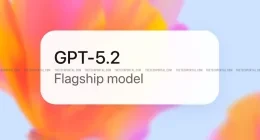While we’ve been seeing numerous (three, to be precise) Windows 10 ‘cumulative update packages’ rolled out by Microsoft, the company has today launched a new Windows 10 Preview build (Build 10525) for PCs, the first such full-fledged build to come out since the July 29 launch.
As we’ve already known, Microsoft has built (and continues to build) the Windows 10 OS as a service, and as a part of that building process, Windows Insiders will continue to play a crucial role, in testing every new build before the Redmond giant rolls it out to general public.
As Gabe Aul puts it,
The Windows Insider Program will focus on building and delivering Windows as a service by updating Windows 10 with new features and functionality on an ongoing basis. As always, Windows Insiders will be the first to see these new features and changes.
Microsoft has brought in numerous new changes with this fresh code. For example, Windows Insiders have repeatedly asked Microsoft to improve the flighting cadence and to keep the Windows Feedback app in the product – both of which are now present.
This new build also gets new colour options. You will now be able to change the default colour for Start, Acton Center, Taskbar, and Title bars to reflect your preferences. The option is still in its early stages though.
In Windows 10, Microsoft has added a new concept in the Memory Manager called a compression store, which is an in-memory collection of compressed pages. This means that when Memory Manager feels memory pressure, it will compress unused pages instead of writing them to disk.
This reduces the amount of memory used per process, allowing Windows 10 to maintain more applications in physical memory at a time and helps provide better responsiveness across Windows 10. The compression store lives in the System process’s working set.
Since the system process holds the store in memory, its working set grows larger exactly when memory is being made available for other processes. This is visible in Task Manager and the reason the System process appears to be consuming more memory than previous releases.
While the build will feature many other changes, it has primarily been rolled out to detail on how the Insider program will work from now on, considering that the actual consumer product is now available.
Now that Windows 10 is out, Windows Insiders can either stick to the consumer release or continue to keep testing new builds. If you’re already a Windows Insider and have been running Windows 10 Insider Preview builds – there is nothing you need to do. You will automatically be upgraded or you can upgrade your build via Windows Update.
However, if you are new and wish to get a Windows 10 Insider Preview build installed on a PC running Windows 7 or Windows 8.1, you should first upgrade to Windows 10 using Microsoft’s free upgrade offer — which of course, is available only to “qualified, genuine Windows 7 and 8.1 devices”. From there, you can opt in to the Windows Insider Program via Settings app > Update & Security > Advanced options under “Get Insider builds”.
Also, while Microsoft did decide to include the Windows Feedback app in the released version of Windows 10 for all customers, the company is giving certain “premium, exclusive” features to those in the Insiders program. Here’s the check-list :
As for all of insiders’ previous feedback — gone from the publicly available search bar. MS says though, that the company has it backed up on its “internal engineering tools” and that its engineers are using it to “find and filter on key feedback for their areas”.
The Tech Portal is published by Blue Box Media Private Limited. Our investors have no influence over our reporting. Read our full Ownership and Funding Disclosure →








